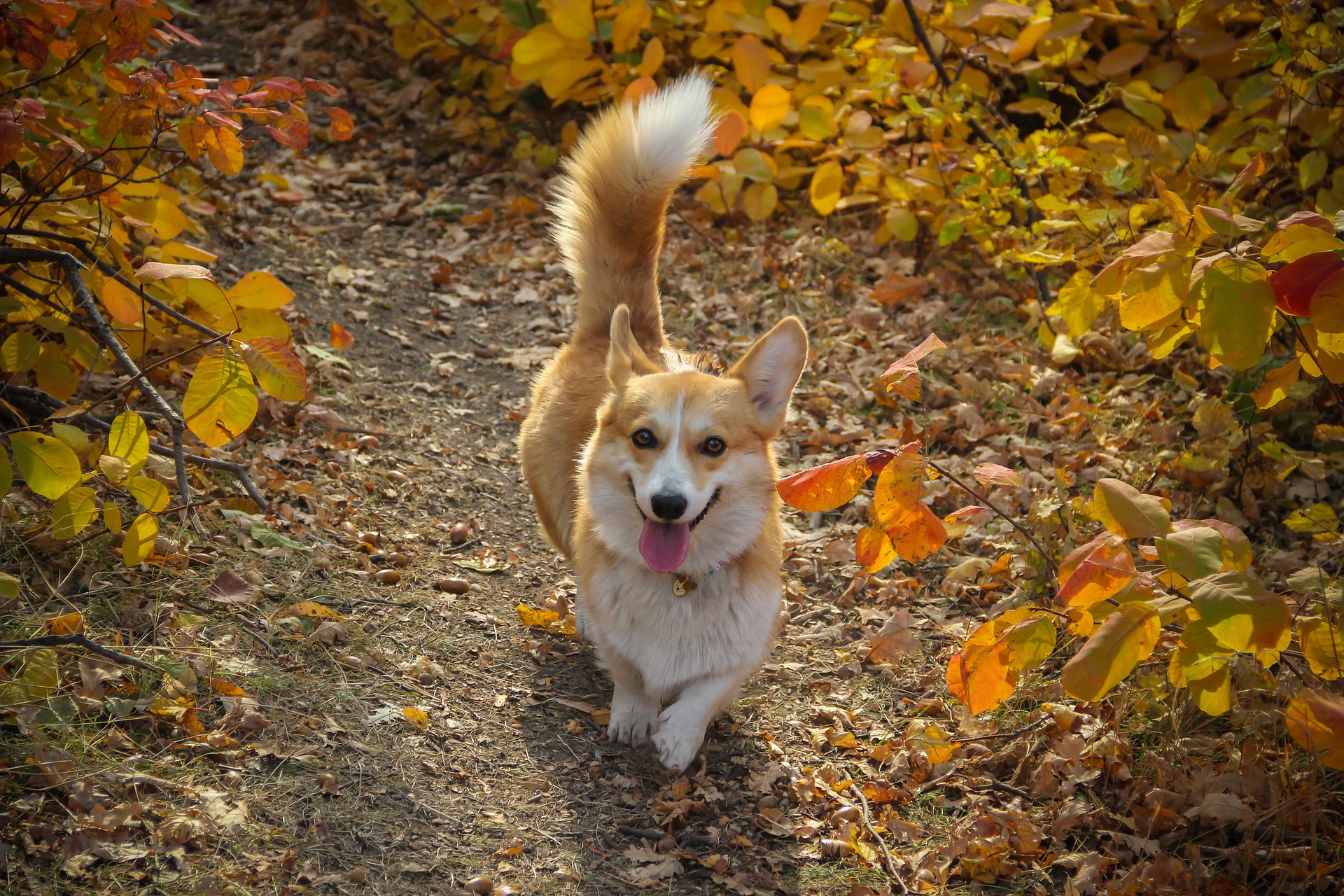Cracking the Code of Dog Tail Wagging
(Hint: It Isn't All About Happiness!)

Written by Dr Dennis Wormald,
Last updated September 2023
One of the most lovable things about a dog is their tail. You can’t help but smile as you watch it wag from side to side with exuberance as they run towards you. A wagging tail is an example of canine body language, but it doesn’t always mean what we think! Did you know, that a wagging tail does NOT mean that a dog is happy? This comes as a shock to many people, often with a side of disbelief! To explain this doggy language misunderstanding, read on below to learn all about what wagging tails really mean!
As with all body language in dogs, you can’t take just one signal and use it as a black-and-white indicator of the emotions of a dog. There are lots of things going on in their face, body position, and movements that all need to be taken together to put the entire picture into context. The tail is just one part of that picture. The meaning of that wagging tail can be determined by what the rest of the dog is doing. To use a human example, would you say that a smiling person is happy? They often are, but not always, have you ever seen a ‘sad’ or ‘sorrowful’ smile? You can tell the difference by the rest of their face, and what they are doing.
In the animal kingdom, tails are used for lots of things, including balance and communication. The advantage of using a tail for signalling, is that it can be moved independently of the body, in large sweeping arcs, which can attract the attention of other animals. When a dog is wagging its tail from side to side, it is like a flag that makes it stand out to the animals around it. The wagging tail is a call for attention, saying ‘look at me’! This explains why a dog that is happy to see you might wag their tail at you, because they are saying hi and trying to get your attention!
Dogs instinctively know that wagging their tail can make them more noticeable, but there are some less happy situations where this can occur. For example, I have seen many cases of dogs that have bitten someone while their tail wagged side to side. I have had people say to me that they were shocked, and never expected the dog to bite, all because they took the tail as a sign that it was friendly. From the dog’s point of view, they wanted to draw attention to their aggressive display of behaviour. By wagging your tail while barking, growling or biting, you are more likely to be noticed! Whis is why it can be dangerous to rely on the tail as a signal that a dog is safe – the picture of the whole dog needs to be taken into account.
Just as a wagging tail is a signal to draw attention to a dog, so too is a tail tucked under their belly. As you may know, a fearful dog will make themselves small and hide their tail. This is essentially the opposite of wagging it, they are trying to NOT attract attention to themselves. Hiding their tail is part of that strategy! When they tuck their tail under their belly, they are hiding the flag and making themselves less noticeable. This is an useful move if you are fearful and want to be left alone.
Sadly, not all dogs have tails, and this can be a problem. In some countries, some breeds of dogs have their tails removed (docked) for traditional or aesthetic reasons. In some other breeds, the dogs have been intentionally bred to be missing part or all of their tail from birth. As tails are used for a dog to communicate, we can now see the effect this can have on the life of a dog. Without a tail, they are missing a tool that they can use to make themselves more or less noticeable. As dogs can’t speak like people, they rely mostly on their body language to communicate. Although it might not seem like a huge deal to have a little flag to wave when you want to get someone’s attention for us, it’s a pretty huge deal for a dog! They only have so many body parts they can use to signal with, and the tail is a big one!
So how then can you tell if a dog is happy? That’s actually a tricky question! A person can feel happy without smiling, or when they are doing an activity, or while relaxing on the couch! There isn’t one thing that a person does that advertises the fact they are happy as they go about their day. It is a combination of their facial expression, the way they hold their body, how they walk, and what they say! The same is true of dogs, it’s all about how relaxed they look, or how engaged they are in an activity, how they hold their body, and yes, also the position of their tail is a part of that.
The next time you see a dog with a wagging tail, imagine a little flag swishing, and have a think about why they might want the attention. While they certainly might be happy, this is not strictly what they are saying with their tail.